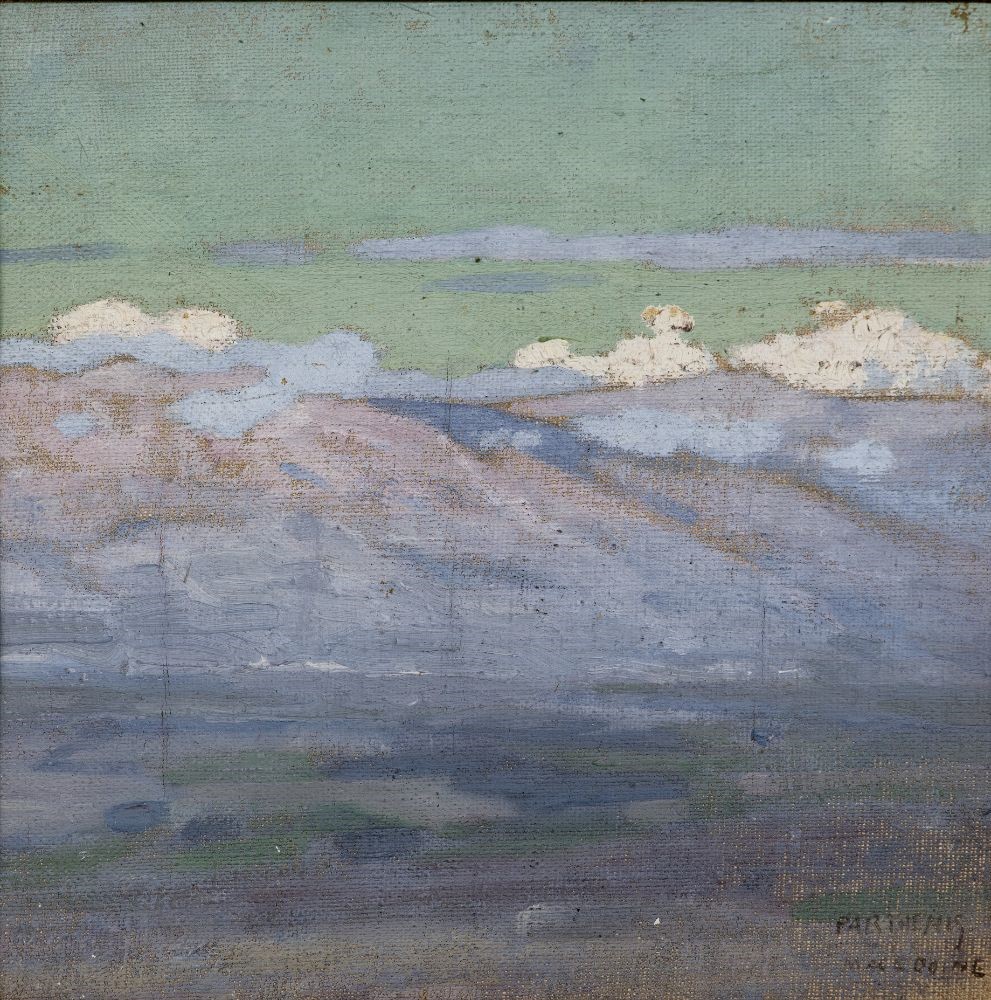Konstantinos Parthenis (Greek: Κωνσταντίνος Παρθένης; 10 May 1878 – 25 July 1967) was a distinguished Greek painter, born in Alexandria. Parthenis broke with the Greek academic tradition of the 19th century and introduced modern elements together with traditional themes, like the figure of Christ, in his art.
Konstantinos Parthenis was born to an Italian mother and a Greek father in Alexandria. After a brief period of study in Italy, he studied from 1895 to 1903 at the Academy of Fine Arts Vienna under Karl Wilhelm Diefenbach. Parthenis belonged to the artistic group “Humanitas” that was founded in 1897 by Diefenbach on the “Himmelhof” in Ober Sankt Veit, and became the nucleus of the early alternative movement or life reform. Parthenis also took music lessons at the same time at the Vienna Conservatory. His first solo exhibition was in Boehm Künstlerhaus in 1899. After his studies in Vienna, he moved to Paris in 1903, and then he lived in Greece, where he worked as an icon painter. In 1907, he painted out the George’s Church in Vienna. he was active as an icon painter of deep religiosity but also characterized by a fraction to traditional icon painting. After his participation in the Venice Biennale in 1938, the Italian government acquired one of his works.
Following his seven-year stay in Vienna, Parthenis came to Athens for the first time in the summer of 1903 to participate in the Athens International Exhibition, where he was awarded a silver diploma. His first Greek landscapes date from that time. The next year he travelled for four months in the region of Macedonia, which was still under Ottoman rule, perhaps due to his father’s Macedonian roots. There, he made many landscape pictures, including views of Mount Pangaion near Kavala (Macedonian name: Kushnica), in a neo-impressionist style. (1)
One of his Macedonian works have been put on sale by the British auction house Bonhams London, New Bond Street with titles “Mountaneous Landscape, Macedonia” oil on canvas 18 x 18cm, lot number 20 on November 18 2020. The painting was given by the artist to his love, the Greek painter Sofia Laskaridou. During his spell in Vienna (1895/6-1903), the artist probably travelled to Paris in 1900 on the occasion of his participation in the Exposition International Universelle,(3) and met the young painter Sophia Laskaridou (1882-1965), who was studying at the Académie Julian (1900-1901). In his first solo exhibition in Athens in 1901, Parthenis showed a series of remarkable portraits of beautiful Sophia, whom he was possibly in love with.(4)
Sources :
Wikipedia: https://en.wikipedia.org/wiki/Konstantinos_Parthenis
Bonhams auction, November 2020: https://www.bonhams.com/auctions/26246/lot/20/
- Pinakothiki journal, December 1904, p. 198. See E. Mathiopoulos, “Costis Parthenis” [in Greek] in Costis Parthenis, Epta Imeres – Kathimerini weekly magazine, July 27, 1997, p. 4; The Greek Painters, vol. II, 20th Century, Melissa editions, Athens 1975, pp. 14, 19, 29; E. Mathiopoulos, The Life and Work of Costis Parthenis [in Greek], K. Adam editions, Athens 2008, p. 36.
3 – See E. Mathiopoulos, “Costis Parthenis” [in Greek] in Costis Parthenis, Epta Imeres – Kathimerini weekly magazine, July 27, 1997, p. 3,
4 – D. Iliopoulou-Rogan, Sophia Laskaridou (1882-1965) [in Greek], Livanis editions, Athens 2007, pp. 36, 47.
